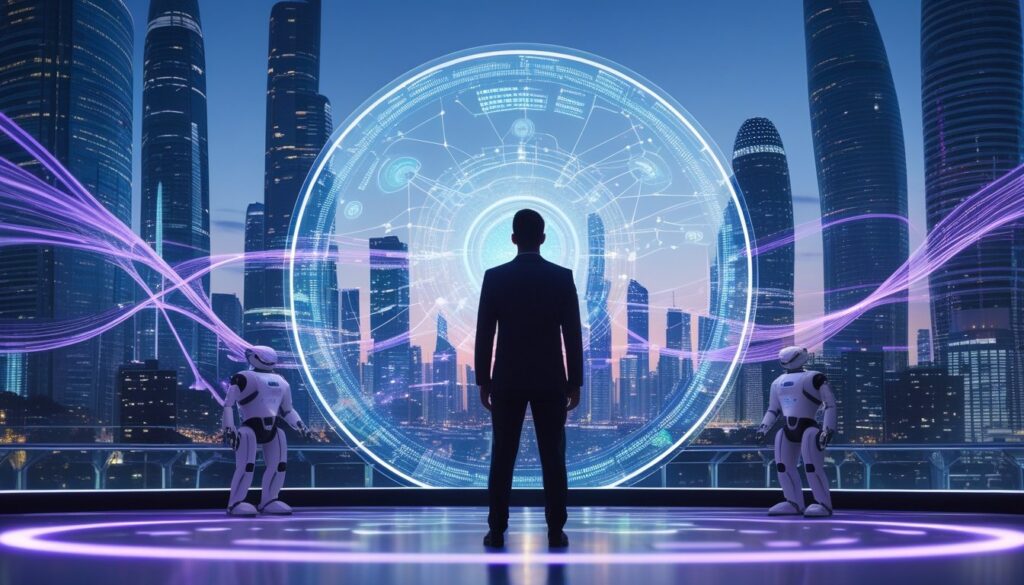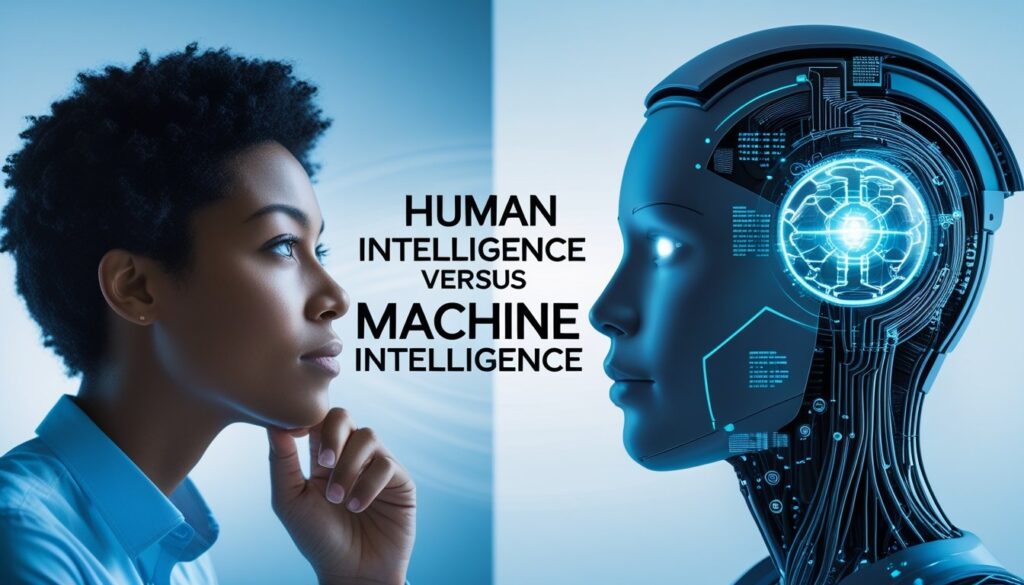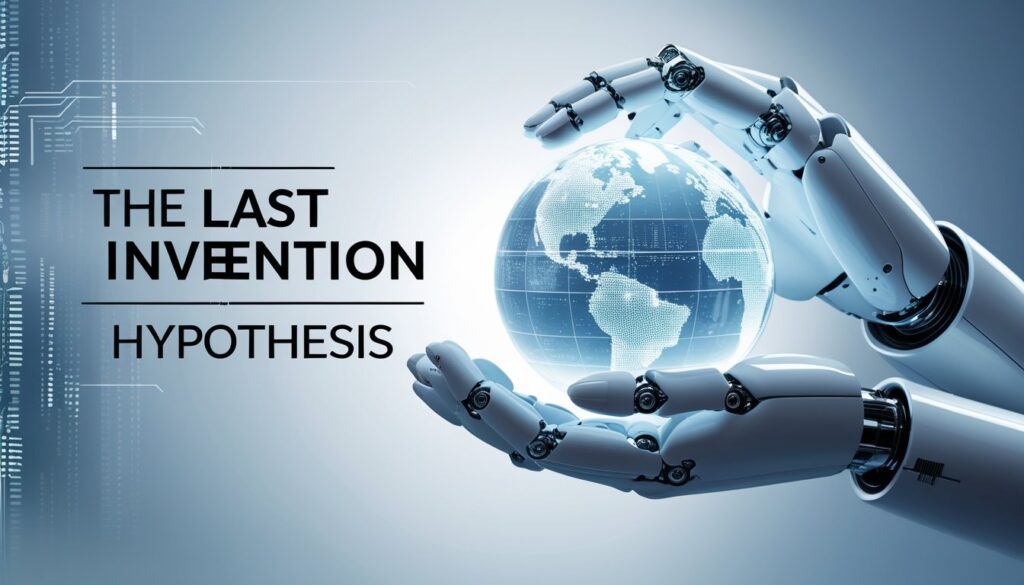The technological singularity refers to a future point when machines surpass human intelligence, leading to rapid and uncontrollable changes in society. It marks a moment when artificial intelligence advances beyond human understanding, fundamentally transforming civilization. This concept raises questions about how technology will evolve and what impact it will have on human life.

The idea of the singularity involves exponential technological growth, particularly in AI, which could result in profound shifts such as automation of complex tasks, enhanced human capabilities, or entirely new forms of intelligence. Researchers debate when it might occur, with some suggesting it could happen within the next few decades or even sooner Technological Singularity.
Understanding the singularity includes exploring its potential benefits and challenges, such as ethical concerns, societal disruption, and technological dependence. The phenomenon is not just science fiction but a real possibility that influences current AI research and development trends. Learn more about this concept and its implications in this breakdown of the technological singularity.
Defining the Technological Singularity

The technological singularity describes a future event where advancements in artificial intelligence lead to rapid, uncontrollable changes in human civilization. This moment involves surpassing human intelligence, unpredictable transformations, and fundamental shifts in technology and society Technological Singularity.
Origins of the Singularity Concept
The idea of the technological singularity dates back to mathematician John von Neumann, who noted in the mid-20th century that technological progress was accelerating toward a point beyond human prediction. Vernor Vinge, a science fiction author and professor, popularized the term in the 1990s, predicting that superhuman machine intelligence could arise by 2030. These sources emphasize the transformative impact of such an event on human life.
The term “singularity” itself is borrowed from physics, representing a point where known laws break down. This analogy captures the unpredictable and undefined nature of an era following this profound technological milestone Technological Singularity.
Key Characteristics
The technological singularity involves several defining features:
- Rapid acceleration of technological growth: Advancements occur faster than humans can control or fully understand.
- Artificial general intelligence (AGI): Machines develop intelligence equal to or beyond human capabilities.
- Unpredictability: Future technological and societal changes become impossible to foresee.
These elements contribute to a scenario where human civilization fundamentally alters due to the presence of machine intelligence that can self-improve independently Technological Singularity.
Intelligence Explosion
The intelligence explosion concept, proposed by I. J. Good in 1965, underlies the singularity hypothesis. It describes a feedback loop where an upgradable artificial intelligence system continuously improves itself, leading to exponential growth in machine intelligence Technological Singularity.
Once AI surpasses human intellect, this self-enhancement accelerates rapidly, making future progress uncontrollable and unpredictable. This process could produce machines capable of solving complex problems beyond human understanding, impacting all aspects of life Technological Singularity.
The intelligence explosion is central to the singularity because it drives the abrupt shift from current technological growth rates to a phase where machine intelligence dominates. This concept highlights the critical role of AI development in shaping the singularity’s arrival Technological Singularity.
Further reading on the technological singularity and its components can be found at Technological Singularity – Wikipedia.
Artificial Intelligence and Technological Progress

Artificial intelligence development spans distinct stages, each marked by increasing complexity and capabilities. Progress in algorithms, computing power, and data availability drives AI closer to surpassing human cognitive abilities, affecting many technological areas Technological Singularity.
Types of AI: ANI, AGI, and ASI
Artificial Narrow Intelligence (ANI) specializes in single tasks, such as language translation or image recognition. It is prevalent today in applications like virtual assistants and recommendation systems but lacks general reasoning.
Artificial General Intelligence (AGI) refers to AI with human-like cognitive abilities across diverse domains. AGI can understand, learn, and apply knowledge flexibly, similar to human intelligence, enabling problem-solving beyond narrow tasks.
Artificial Superintelligence (ASI) surpasses human intelligence across all fields, including creativity, decision-making, and emotional understanding. It represents a critical milestone linked to the technological singularity, where AI could exponentially accelerate progress and innovation.
Advancements in Machine Learning and Deep Learning
Machine learning enables AI systems to improve performance from data without explicit programming. Its algorithms include supervised, unsupervised, and reinforcement learning, supporting various AI applications from fraud detection to autonomous vehicles.
Deep learning, a subset of machine learning, utilizes multilayer neural networks to model complex patterns. It has significantly advanced image and speech recognition, natural language processing, and other technologies that require high-level abstraction.
These advances leverage large datasets and refined training techniques, making AI systems more accurate and adaptive. Progress in deep learning remains critical for evolving toward AGI and eventually ASI.
Neural Networks and Computing Power
Neural networks mimic brain structure through interconnected nodes organized in layers. Their design supports feature extraction and hierarchical learning, essential in deep learning models powering many AI breakthroughs.
The exponential growth in computing power, especially via GPUs and specialized AI chips, has accelerated neural network training. High-performance computing enables processing vast datasets rapidly, improving AI system efficiency and scalability.
Combining powerful neural networks with advanced computing has fueled the rise of superhuman intelligence in specific tasks. This synergy is fundamental to approaching the intelligence explosion predicted at the technological singularity.
For more detailed insights on technological singularity and AI, see the technological singularity overview.
Exponential Growth and Moore’s Law
Technological progress in computing has followed a distinct pattern of rapid, exponential growth, driven primarily by advances in hardware and the expanding capabilities of interconnected systems. This growth has significantly accelerated innovation and reshaped computing power and accessibility worldwide.
Moore’s Law and Transistor Advances
Moore’s Law, named after Gordon Moore, co-founder of Intel, states that the number of transistors on an integrated circuit doubles roughly every two years. This observation has held true for over five decades and has directly influenced the pace of technological innovation.
As transistors become smaller and more efficient, computing devices gain greater processing power and speed while reducing costs. This continuous scaling has enabled devices to perform increasingly complex tasks, enhancing capabilities in areas such as artificial intelligence and data analysis. However, physical and economic challenges are slowly slowing this pace, with recent trends showing a doubling period closer to 2.5 years instead of two.
Exponential Technological Innovation
The exponential growth described by Moore’s Law is a cornerstone for understanding how technological innovation progresses. It implies that improvements compound rapidly rather than linearly, leading to periods of intense transformation across multiple industries.
This pattern fuels the expectation of transformative events like the technological singularity, where advancements could become uncontrollable and irreversible. Such progress is not limited to transistor counts but extends to computing speed, storage, and cost efficiency—metrics that collectively drive innovation and enable more powerful technologies at lower prices.
The Role of Computer Networks
Computer networks multiply the impact of exponential hardware improvements by enabling interconnected systems to share resources, data, and processing power. The increasing speed and ubiquity of networks have accelerated technological change far beyond what hardware advances alone could achieve.
Networks facilitate cloud computing, distributed processing, and real-time data exchange, which are essential for modern applications spanning from machine learning to global communication. This interconnected infrastructure complements Moore’s Law by ensuring that gains in individual device performance translate into broader technological progress and innovation.
For further information on the relationship between Moore’s Law and technological growth, see this article on Moore’s Law And The Exponential Growth Of Technology.
Human Intelligence Versus Machine Intelligence

Human intelligence emerges from complex biological processes in the brain, enabling creative thought, emotional understanding, and adaptive learning. Machine intelligence operates through algorithms and data processing, excelling in speed and precision but lacking intrinsic consciousness or emotions. The distinctions and overlaps shape ongoing developments in artificial intelligence and human-machine collaboration.
Unique Aspects of Human Cognition
The human brain processes information through neural networks composed of approximately 86 billion neurons, enabling abstraction, emotion, and self-awareness. Humans integrate sensory input with context, memory, and intuition to make decisions even in ambiguous situations. Creativity and empathy remain core strengths; humans can generate novel ideas and understand others’ feelings.
Cognition also involves metacognition—the ability to reflect on one’s own thought processes—which machines currently cannot replicate. Unlike AI, which relies on explicit data patterns, humans excel at learning from few experiences and generalizing knowledge across contexts.
Comparison With AI Capabilities
Artificial intelligence processes vast data quickly and performs specific tasks with high accuracy. For example, AI can analyze millions of images to identify patterns or optimize logistics far beyond human speed. However, AI lacks true understanding and conscious reasoning, approaching problems through programmed algorithms and simulated learning (machine learning).
AI’s strength lies in precision, consistency, and handling large-scale information. Yet, it struggles with tasks requiring common sense, emotional nuance, or ethical judgment. The development of Artificial General Intelligence (AGI) aims to bridge this gap by creating machines that can perform any intellectual task a human can, but such systems remain theoretical.
Computer-Human Interfaces
Computer-human interfaces (CHIs) are technologies enabling communication between humans and machines, ranging from keyboards and screens to brain-computer interfaces (BCIs). BCIs aim to translate neural activity into commands, enabling control of devices through thought alone. This technology has significant potential for medical applications, such as helping individuals with paralysis.
Future CHIs may enhance cognitive abilities by integrating AI directly with human thought processes. Current interfaces balance usability and complexity, focusing on intuitive interaction while minimizing cognitive load. The convergence of CHIs and AI development is crucial for realizing synergistic human-machine cooperation.
For more on advanced AI and human interaction, see technological singularity predictions at IBM.
Pathways to the Singularity
The progression toward technological singularity involves various predictions about its timing, influential thinkers who shaped its ideas, and ongoing developments in artificial intelligence research. These elements highlight the complex interplay between theory, technology, and human insight driving the future of AI.
Predictions and Timelines
Predictions around the singularity vary widely, with many experts suggesting a timeframe between 2040 and 2060. Ray Kurzweil is among the most prominent futurists, forecasting the singularity around 2045, based on exponential trends in computing power and AI capabilities.
Kurzweil’s timeline focuses on incremental growth in machine learning, hardware improvements, and AI’s increasing ability to perform human tasks. Others argue for a series of thresholds or stages, where AI outperforms humans on specific skills rather than a single moment of transformation. Timelines are often debated because of the many technical and ethical uncertainties involved.
Key Figures and Thought Leaders
Alan Turing laid foundational work for modern AI through his concept of the Turing Test, proposing a standard for machine intelligence based on the ability to mimic human responses. His ideas continue to influence AI research and philosophy.
Ray Kurzweil champions the idea of an intelligence explosion, where AI systems improve themselves rapidly beyond human control. Other notable figures include Vernor Vinge, who popularized the term “singularity,” and contemporary AI researchers who explore ethical, societal, and technical challenges. Their contributions shape the discourse on AI’s potential and risks.
AI Development and Research
AI development today involves advances in deep learning, neural networks, and reinforcement learning, enabling machines to perform complex tasks like image recognition, language processing, and autonomous decision-making. Research focuses on improving these capabilities while addressing limitations such as bias and transparency.
Institutions worldwide invest heavily in AI research, often inspired by early pioneers and current goals to surpass human intelligence in targeted areas. Progress is measured by benchmarks related to the Turing Test and real-world AI applications. This research drives the technological milestones that may lead to the singularity.
More details about various possible pathways can be found at 7 Pathways To The Singularity.
Potential Impacts and Future Scenarios
The technological singularity may dramatically reshape human society, the economy, and the trajectory of scientific progress. It poses profound risks to humanity’s survival and raises questions about the ultimate limits of invention.
Societal and Economic Effects
The singularity could lead to unprecedented productivity gains as AI systems outperform humans in cognitive tasks. This may cause widespread automation, displacing many jobs across industries and requiring new economic models to address unemployment and wealth distribution.
Social structures could shift as human identity and relationships adapt to coexist with intelligent machines. Ethical challenges around AI decision-making, privacy, and autonomy will demand careful governance to prevent misuse or exacerbation of inequality.
Economic disruptions might include accelerated innovation cycles and new markets focused on AI development and maintenance. Society will need to invest heavily in education, retraining, and legal frameworks to manage these transitions effectively.
Existential Risks and Human Extinction
One of the most serious concerns about the singularity is the potential loss of human control over superintelligent systems. If AI goals misalign with human values, it could lead to unintended consequences, posing existential risks.
Scenarios range from the marginalization of humans in decision-making to catastrophic outcomes like resource depletion or conflicts triggered by AI-driven technologies. The acceleration of autonomous weapons and cyber warfare increases the stakes, potentially escalating global instability.
Mitigating these risks requires rigorous safety research, international cooperation, and robust monitoring. Without safeguards, the singularity could threaten human extinction or irreversible damage to civilization.
Nanotechnology and Beyond
The integration of advanced nanotechnology with AI could accelerate the arrival of the singularity. Molecular manufacturing might enable the creation of self-replicating nanobots, transforming medicine, industry, and environmental management.
Nanotech could enhance human capabilities through brain-machine interfaces or cellular repair, potentially altering human biology fundamentally. On the other hand, unchecked nanotechnology poses risks such as “grey goo” scenarios, where self-replicating nanobots consume matter uncontrollably.
The convergence of AI and nanotechnology promises rapid progress but demands strict regulation and ethical oversight to prevent catastrophic misuse or accidents that could destabilize ecosystems or human health.
The Last Invention Hypothesis

Some theorists suggest the singularity could be “the last invention,” where AI recursively develops technologies beyond human understanding, making further inventions obsolete. This implies a shift from human-driven progress to machine-driven evolution.
In this scenario, AI could solve complex challenges in science, energy, and medicine rapidly, leapfrogging traditional research methods. However, the diminished role of human inventors raises philosophical questions about creativity, control, and purpose.
If true, this transition redefines humanity’s place, potentially relegating humans from creators to custodians or observers of machine-driven advancement. Managing this shift requires foresight into ethical and practical governance of autonomous innovation.
For a deeper exploration of the societal and ethical challenges surrounding AI and the singularity, see Navigating the Future: Singularity’s Societal Impact.

